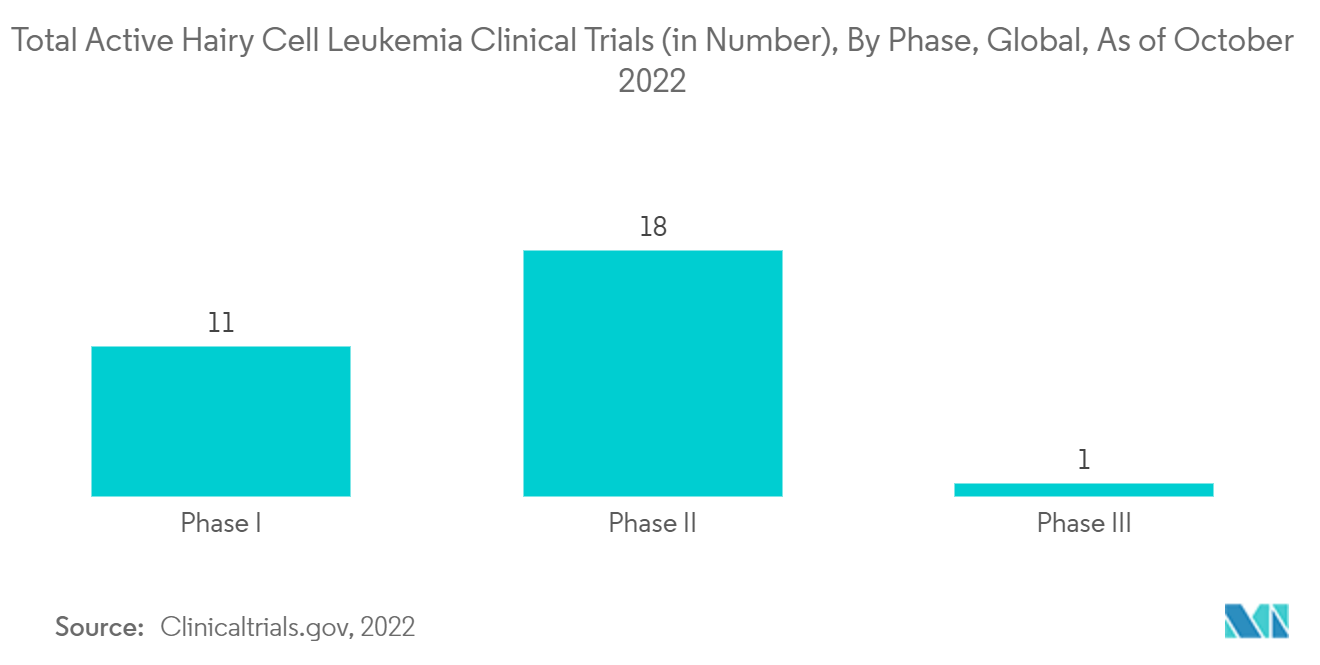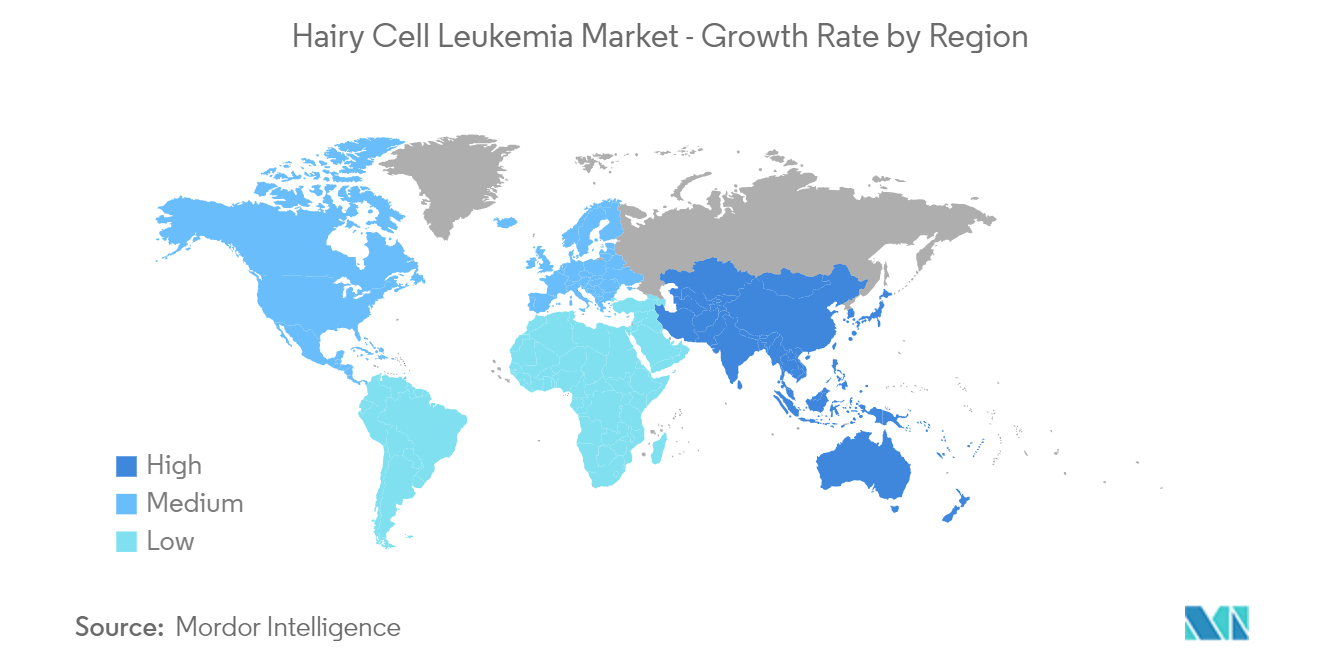Market Trends of Hairy Cell Leukemia Industry
This section covers the major market trends shaping the Hairy Cell Leukemia Market according to our research experts:
Chemotherapy Segment is Expected to Register a Significant Growth Over the Forecast Period
The chemotherapy segment is expected to witness significant growth in the hairy cell leukemia market over the forecast period. The key factor contributing to the growth of the chemotherapy segment is the rising incidence of leukemia cases. Chemotherapy drugs, specifically purine analogs such as cladribine and pentostatin, are considered an initial treatment option for most individuals with hairy cell leukemia. Additionally, the increase in funding for companies and rising focus on adopting various business strategies such as partnerships, and conducting clinical trials related to hairy cell leukemia is expected to boost the studied market. For instance, in November 2021, the Leukemia and Lymphoma Society and Hairy Cell Leukemia Foundation announced a five-year, USD 10 million partnership in support of research on hairy cell leukemia (HCL), a rare hematological malignancy that infiltrates the blood, spleen, bone marrow, and other organs. As part of the collaboration, the two organizations collaborated on the HCL 2025 grants program, which aims to improve patient outcomes by gaining a deeper understanding of hairy cell leukemia.
Therefore, owing to the factors mentioned above, the studied segment is predicted to witness growth over the forecast period.

North America is Expected to Have the Significant Market Share in the Hairy Cell Leukemia Market Over the Forecast Period
North America is anticipated to witness significant growth in the hairy cell leukemia market over the forecast period. Among other countries in the region, the United States is leading the market due to high healthcare expenditure, research, and development activities, and a rising prevalence of Chronic Lymphocytic Leukemia (CLL) and hairy cell leukemia. Additionally, the rising geriatric population across the United States is the primary driver for the hairy cell leukemia market in the region.
The rising prevalence of chronic lymphocytic leukemia is also expected to increase the risk of developing hairy cell leukemia among the population. For instance, as per the 2022 data published by the American Cancer Society, nearly 60,650 new cases of leukemia (all kinds) are estimated to be diagnosed in 2022, among which chronic lymphocytic leukemia (CLL) accounts for approximately 20,160 new cases. Additionally, as per the same source, about 1/4th of newly diagnosed cases of leukemia are CLL. Also, as per the 2021 data published by the NORD, about 6,000 persons are affected by hairy cell leukemia, and approximately 600-800 new cases are diagnosed in the United States every year. Thus, the increasing burden of leukemia cases among the population is anticipated to increase the demand for effective treatment and therapies which in turn is expected to boost the market growth.
Furthermore, most people with CLL are older individuals typically of age 70 years old when they receive a diagnosis. In addition, the data updated in February 2022 by HealthyPeople.gov, the United States HHS shows that the population in the United States is aging unprecedently and the population aged 65 or older is projected to reach 23.5% (98 million) by 2060 in the country. Thus, with the increasing geriatric population, the risk of developing hairy cell leukemia, a type of chronic lymphocytic leukemia is raising which is expected to increase the demand for the availability of drugs and therapy for the treatment of hairy cell leukemia which in turn is anticipated to boost the market growth over the forecast period.
With the increasing pharmaceutical spending on research and development, the adoption of various business strategies, and advanced technology for developing treatments and therapies is expected to boost the market growth in the region. For instance, according to the 2022 data published by the Organisation for Economic Co-operation and Development (OECD), the United States and Canada spent 3.4% and 1.60% of their GDP on research and development activities in 2021. Thus, the high investment in research and development by the countries further increases the company activities, thereby supporting market growth.
Therefore, owing to the factors mentioned above, North America is predicted to witness growth over the forecast period.


